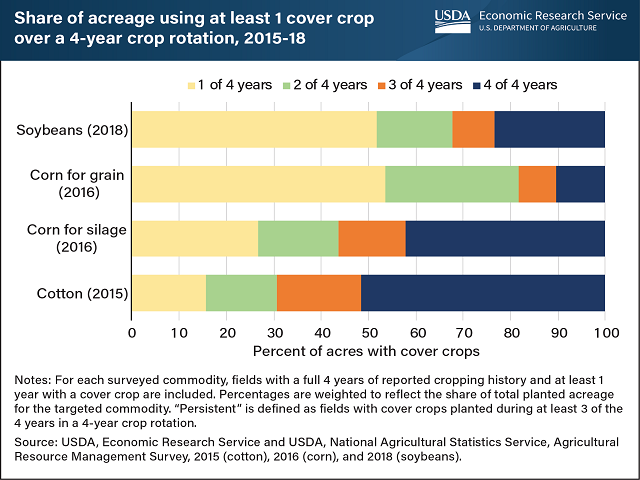
WASHINGTON, DC – Roughly half of all the farmers across the United States are utilizing cover crops. According to the Economic Research Service (ERS), consistent adoption (defined as the use of a cover crop in at least three out of every four years) can increase the accumulation of organic soil matter, thus healthier soils. The most commonly used cover crops, according to ERS, are unharvested cereal rye, oats, winter wheat, and clover, and are typically added to a crop rotation during the period between two major crops. When it comes to those production crops, the largest ratio of cover crops is planted between cotton crops (69 percent), followed by silage (56 percent), soybeans (32 percent), and corn (19 percent). Nationally, cover crop acreage has increased over time as conservation programs have promoted cover crop adoption through research, technical assistance, and financial assistance. Also, as Congress and the Biden Administration push forward on climate change legislation, and look for programs to sequester carbon, the use of cover crops may increase as growers find additional financial benefits for doing so.
(SOURCE: All Ag News)
